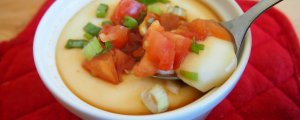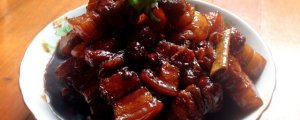
Ice cream and pineapple bag. You can feel the ice and fire in your mouth.
(111314 views)
The skin of Japanese pineapple bag is crispy, while that of table pineapple bag is crispy. The methods are similar. The difference is that the butter does not need to be softened when Japanese pineapple bag is used to make pineapple skin. The frozen butter should be used to kill. The outer layer of the prepared pineapple skin is coated with a layer of sugar. The roasted pineapple bag is very crispy.
Cooking ingredients
Cooking Steps

Step1:Put all the ingredients except butter into the toaster. Select the mixer program (iMix) of the toaster and knead for 20 minutes. Add butter and knead for 20 minutes. When sharing, knead out dough that can be pulled into film in 40 minutes.

Step2:Put the dough in the bread machine. Use the rice wine function to ferment for 60-80 minutes for the first time. It can be opened in the middle. The fermentation temperature is different and the fermentation time is different. It is noted that the first fermentation temperature can not exceed 28 degrees. The fermentation temperature can be lower than 28 degrees. The fermentation time will be prolonged if the temperature is low. But the temperature can never exceed 28 degrees. If the room temperature is high, direct room temperature fermentation is recommended. Dough fermented to original twenty-two point five Double the size of the dough. Dip the high gluten flour with your fingers. Poke a hole in the dough. The hole does not retract or collapse. Or the hole slightly retracts to prove that the fermentation has been completed. If the dough still retracts a lot, it needs to continue to ferment. If the dough collapses, it means over fermentation.

Step3:When making fermented dough, pineapple peel butter should be taken out of the freezer in advance and warmed back for a while. However, the butter does not need to be softened completely. When it is still hard, it should be stirred into paste shape with an electric egg beater.

Step4:Add in the sugar and continue to stir.

Step5:Add the whole egg mixture in several times. Beat each time evenly before adding the next time.

Step6:Sift in the low gluten flour and stir until you can't see the dry flour.

Step7:Put the dough of pineapple skin on the kneading pad. Fold it once. Then put it into the fresh-keeping bag and refrigerate it for more than 30 minutes

Step8:After fermentation, take out the dough and exhaust. Divide it into 50g / piece small dough. Roll it. Cover with plastic film and relax for 20 minutes.

Step9:Pineapple skin dough is also taken out and divided into 40g / piece. Round.

Step10:Round the dough again and let it out of the air. Tighten the bottom.

Step11:Pineapple skin is flattened. Sprinkle proper amount of low gluten flour on the kneading pad. Otherwise, it will stick.

Step12:Then the pineapple skin wraps the dough. To cover most of the dough, only the bottom of the dough can not be wrapped. Spray water on the surface.

Step13:Then dip in some sugar.

Step14:Drain into the baking tray. Leave enough space between each dough. Scratch out with a scrape

Step15:

Step16:

Step17:

Step18:

Step19:
Cooking tips:1. The order of putting materials into the bread barrel is generally to put liquid materials such as water, milk, eggs, etc. first, and then put yeast. Yeast is dissolved in water. Then add dry materials such as flour, sugar, milk powder, salt, etc. note that salt should be placed in a small corner separately. It is not allowed to contact yeast alone, so as to prevent yeast from dehydration and losing activity after touching salt. Yeast can be put first or later. It will not affect fermentation. The most important yeast is not in direct contact with salt and sugar. 2. Due to the different water absorption of flour used by everyone, when using the new formula, first add most of the water and leave a small amount for adjustment, so as to avoid the dough being too sticky due to too much liquid. 3. When the dough is just mixed, it is sticky. At this time, do not add powder easily. The dough will not be too wet and sticky after it is out of tendons. 4. Butter should be softened before use. If the butter is too hard, you can knead it a few times. Use the temperature of your hand to soften the butter. 5. Dough fermentation - General
 Chinese Food
Chinese Food












